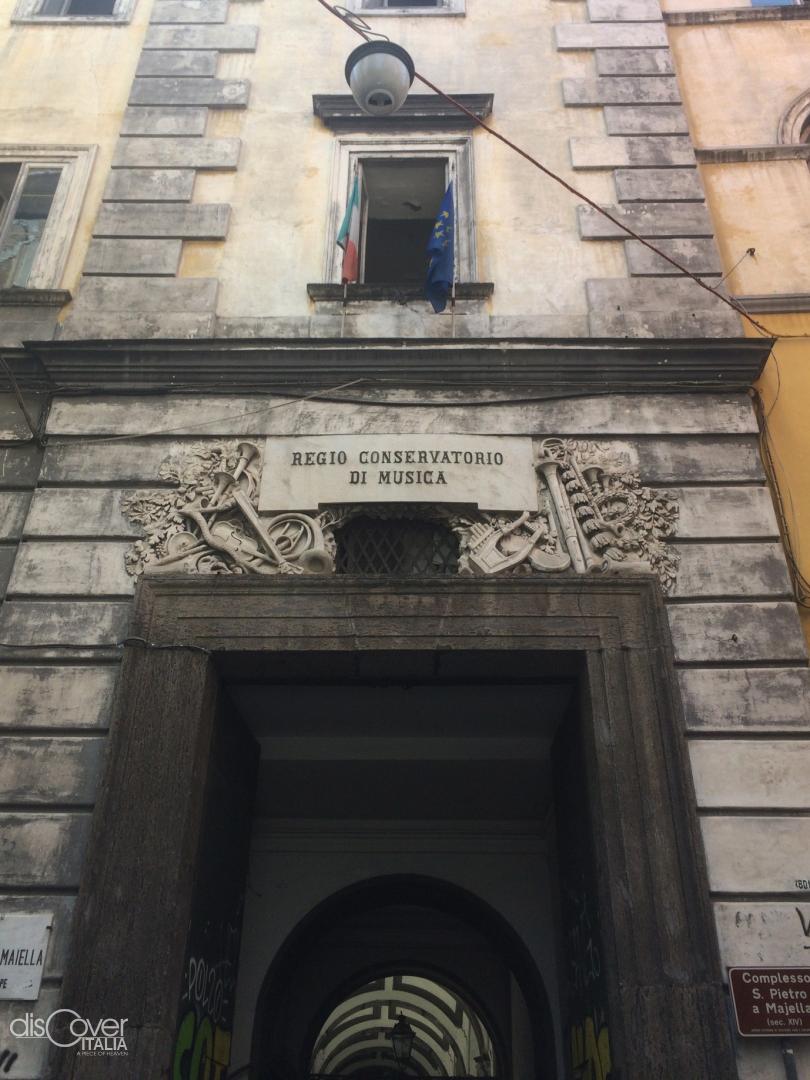A few steps from the church of San Pietro a Majella is the homonymous Conservatory, which represents one of the main centres of European musical culture and, to this day, is still one of the most renowned music schools in Italy.
 Walking along the street where it is located, it is possible to listen to the notes that come out of the classrooms and internal environments. The visitor passing by will be pleasantly struck by this aspect of Via dei Tribunali, a street that is always chaotic and full of life.
Walking along the street where it is located, it is possible to listen to the notes that come out of the classrooms and internal environments. The visitor passing by will be pleasantly struck by this aspect of Via dei Tribunali, a street that is always chaotic and full of life.
The Conservatory of San Pietro a Majella was born in 1807 as the "Real Collegio di Musica". Four pre-existing musical institutes merged into it, born in reality as orphanages and located at the time in various parts of the city and in which, during the 18th century, important musicians, even of international fame, performed. We think, for example, of Mozart, who in 1770, during his trip to Italy, performed at the Conservatorio della Pietà dei Turchini. Important composers such as Saverio Mercadante, Vincenzo Bellini and, more recently, the acclaimed conductor Riccardo Muti were trained in the Conservatory of San Pietro a Majella. In 1826 the entire complex moved from the original location located in Via San Sebastiano to the current location in Via San Pietro a Majella, where it is still located today.
The conservatory building is very characteristic and inside it also houses two cloisters which, in reality, are part of the church, but which today are the seat of the Neapolitan musical institute. The large cloister, as can also be seen from a plaque, was founded in 1684 by the will of Father Celestino. These, to tell the truth, continued the project of his predecessors, who already wanted to remodel the cloister dating back, like the church, to the fourteenth century. The large cloister has a large and spacious environment, where rich vegetation thrives. Remarkable, then, are the arches, supported by robust piperno pillars, which give a continuous rhythm to the entire complex. The upper part of the factory is characterized by windows with baroque and rococo ornaments and decorations. At the centre of the cloister is the Beethoven, a sculptural work by Francesco Jerace from the late nineteenth century. The small cloister, as the name suggests, is smaller than the previous one. Located on the right side of the entrance, it is also characterized by pillars that support an arch. However this cloister, much larger than the large one, retains its Gothic origins, with white and gray stucco decorations on the vault.
Inside the conservatory we also find a musical library full of documents, autographed manuscripts, opera librettos that belonged to great musicians and composers of the past such as Domenico Cimarosa, Vincenzo Bellini and Gaetano Donizetti, just to name a few. You can also find important relics and musical instruments of musicians and composers from the most disparate historical periods. Among the most valuable pieces in the collection is certainly a harp by Antonio Stradivari from 1681. Of great interest is also the picture gallery, which mainly has portraits of famous musicians, among which it is worth remembering the Saverio Mercadante by Filippo Palizzi and the Gioacchino Rossini by Domenico Morelli.
Finally, there is the archive which houses all the papers relating to the history of the conservatory. A substantial documentation, in fact, highlights the stages that led to the merger of the four previous musical institutes and records the various phases of construction of the halls and environments of the institute.



Comments powered by CComment